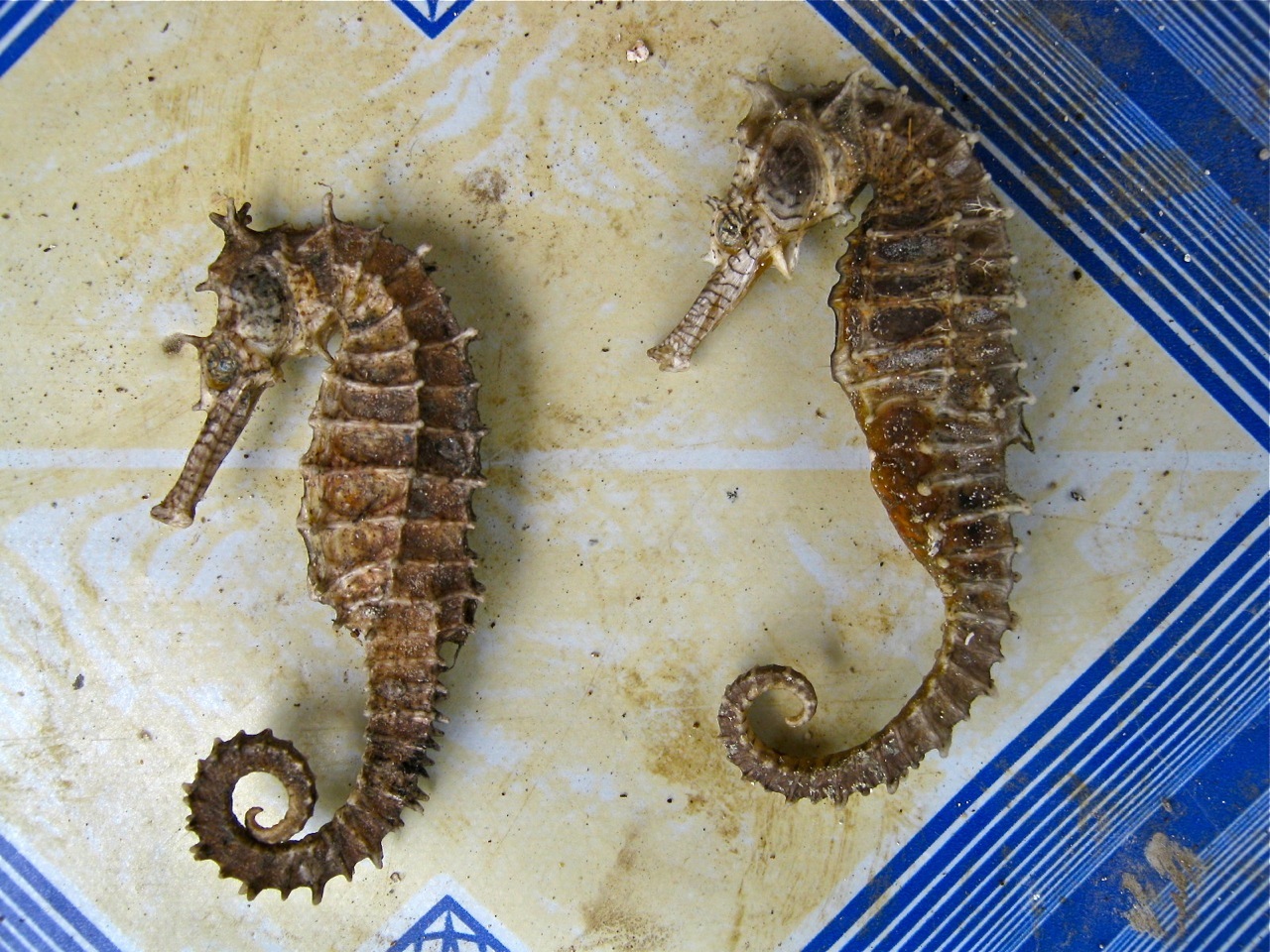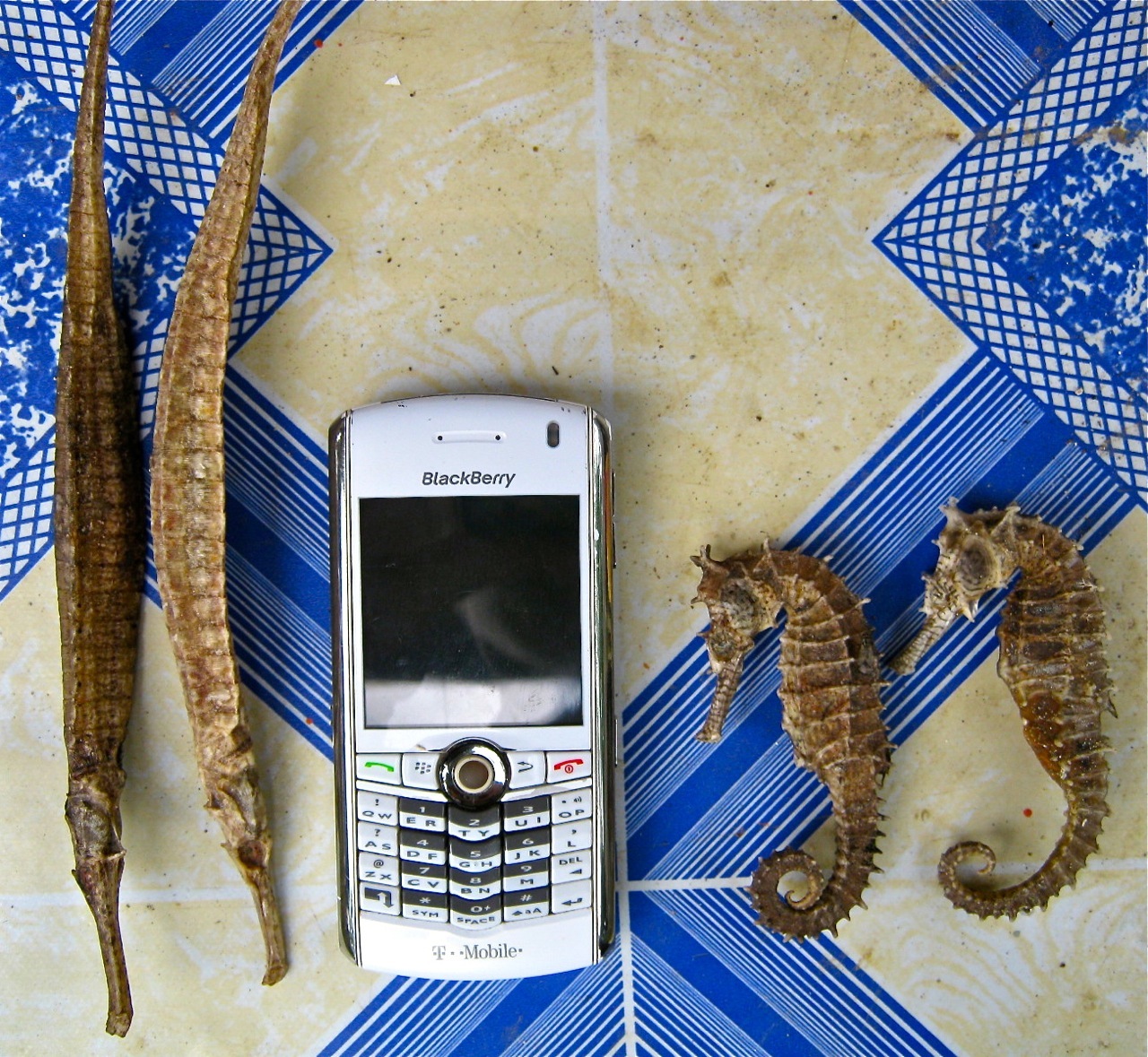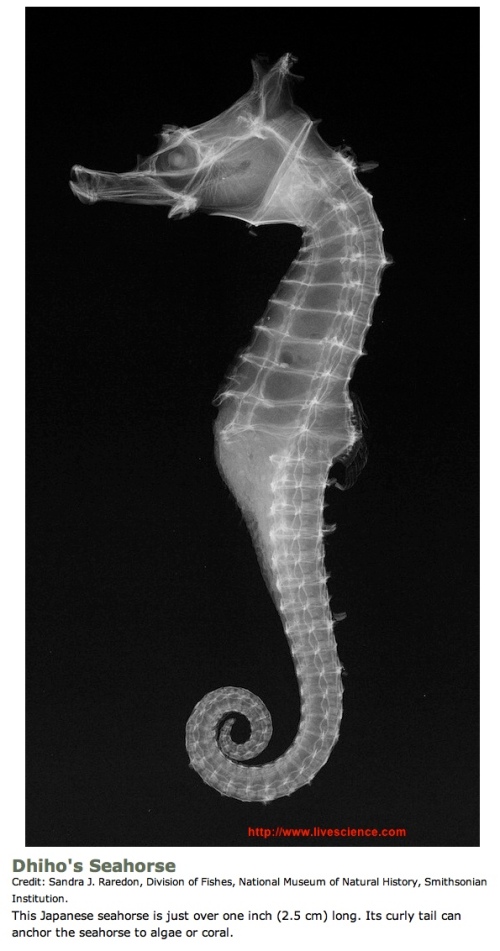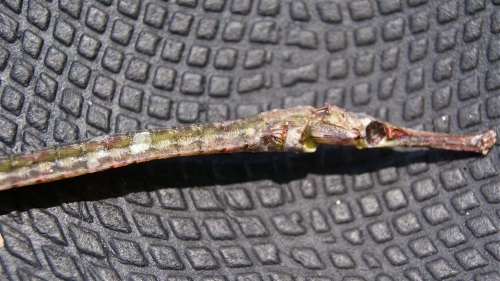Flashback
I blogged about seahorses in Marine Products.
Compare this:

Dried Seahorses for export to China
to this:
Beautiful animals, aren’t they? Surely God-given.
Chinese medicine
Chinese medicine uses seahorses and seadragons (pipefish is their scientific name) as ingredients for its medicine. Chinese medicine is mostly handmade medicine (although that’s changing rapidly due to machinery). Many of those jars contain dried animals. You name it: insects, amphibians, mammals, fishes.
In China, seahorses are prescribed from ailments such as asthma, arteosclerosis, dizziness, joint pain, impotence and incontinence. The fact that dried sea horses are consumed for virility is ironic because sea horse are a species in which the males get pregnant.
Seahorse soup “North is ginseng and south is seahorse” is a Chinese adage from the Divine Peasant’s Herbal Compendium. But Chinese have not been the only ones who consumed seahorses as a medicine. The Roman historian Pliny the Elder reported that “ashes of seahorse…mixed with soda and pig’s large” cured baldness.
In Hong Kong, “inferior” seahorses sell for about $100 a pound, Higher quality ones go for around $400 a pound. The seahorses are usually ground and mixed with herbs and other ingredients are made into a tea. An estimated 2 million seahorses were consumed in China in 1992, a tenfold increase from the previous year. Three million were consumed in Taiwan the same year.
— allthingsadnimalsandmetoo, posted Nov. 2010
Global trade
An estimated 24.5 million or 70 tons of seahorses are sold annually for use in Chinese medicine. Most seahorses on the market are caught accidentally by shrimp trawlers who later handpick them from the net and sell them for additional income on the international market. In some countries, seahorses are targeted by lantern fishers who fish by night when seahorses are most active.
But seahorses are a fragile species that respond quickly to habitat destruction and overfishing and may not be able to survive the current rate of harvest. Seahorses are sparsely distributed and don’t travel much, so once they’re removed from an area they don’t return easily. They also remain faithful to their mate and don’t reproduce quickly, making them exceptionally vulnerable to population reduction when too many are caught at sexual maturity.
Some of the world’s poorest fishermen target seahorses. Because the average income in some poor countries is just one or two dollars a day, seahorses can greatly increase a fisherman’s income. Even though most fishermen sell their catch to distributors at the low price of $0.10 to $1.56 USD per kilo, the profit is a strong incentive. Desiccated seahorses sell for between $333 and $666 USD per kilo in San Francisco.
— Breakthroughs magazine, UC Berkeley
Chinese medicine is the largest market for these animals. It would be accurate to stay that chinese medicine drives the demand for seahorses and seadragons.
The belief behind seahorses
From UC Berkeley again:
Seahorses are reputedly high in yang, the active male force, and are a respected treatment for many ailments associated with a cold kidney system. As a source of fire energy, seahorse can be used to treat many symptoms including impotence, urinary incontinence, wheezing, abdominal pain, toxic swelling and debility in the elderly.
And how it’s used
SEAHORSE: Powdered whole seahorses are used in Chinese medicine as a general tonic, and for kidney problems. Alcoholic extractions are given to stimulate hormones (you drink it meaning you drink the liquid of a jar containing a seahorse that’s been stored in alcohol).
Seahorse is a common ingredient in Chinese tonic mixtures.
- PARTS USED: Whole.
- ACTIVE INGREDIENTS: Not known.
- ACTIONS: Tonic; stimulant.
- MEDICINAL USE: A Chinese medicine used as a general tonic and for kidney problems, such as difficulty in urinating. Chinese physicians also use alcoholic extractions for their hormone-stimulating effect.
- PREPARATIONS: Powder, alcoholic extraction.
Where horses and dragons live
Rodney (from my Double Island and Mansaric adventures) told me that seadragons and pipefishes lie in shallow waters less than two meters deep at low tide. They don’t thrive near corals. Instead they thrive in grassy and forest-like foliage.
Nice house, isn’t it, where horses and dragons live. Go ahead. Enlarge that image.
Seahorses are difficult to keep in captivity so enjoy them in the wild.
Dried Fish
The pipefish below is the first animal that I’ve ever dried. Lol! It was as simple as laying it out in the sun, making sure it didn’t get shaded, and at 4 p.m., it was dry already. Total drying time: less than five hours.
Here’s a group photo with my old cellphone thrown in to provide a sense of the sizes of the different objects. The cellphone was 10 centimeters long. That’s four inches.

Seadragons and seahorses with my old phone for comparison
You want to zoom in? How to enlarge these images.
Chemz click on the image and then, on the next screen that appears, click on the image’s final resolution (encircled).









Cool pic (sorry they are going to China).
Unless I am mistaken, I believe many women will also like the fact that the male seahorse takes a large role in rearing the offspring 😉
LikeLike
next is the gekco… “Tuko”
LikeLike
Pingback: Landslide damage! | Retired? No way!
Pingback: Seadragon Hunter | Retired? No way!